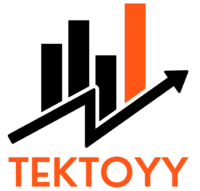Personal finance can often feel like a complicated puzzle with a thousand different pieces. You hear about budgeting, investing, insurance, credit scores, and retirement accounts, all swirling around in a sea of confusing advice. It’s easy to get overwhelmed and not know where to start.
But what if you could simplify it all? What if you could build a strong, stable financial life by focusing on just five fundamental areas?
Welcome to the five pillars of personal finance.
Think of building your financial future like constructing a grand, enduring temple. It needs a solid foundation and strong, supportive pillars to stand the test of time. Neglect any one of them, and the entire structure becomes unstable. By understanding and mastering these five pillars—Earning, Saving, Investing, Spending, and Protecting—you can create a simple yet powerful blueprint for achieving financial wellness and building lasting wealth.
This guide will break down each pillar, showing you not only what it is, but how it works in harmony with the others to create a life of financial control, security, and freedom.
Pillar 1: Earning – The Engine of Your Financial Life

Everything in personal finance starts with income. Earning is the engine that powers your entire financial journey. Without a consistent and growing stream of income, the other pillars have no fuel. However, mastering this pillar is about much more than simply collecting a paycheck. It’s about strategically maximizing your ability to generate cash flow.
Your Primary Income: Your Greatest Wealth-Building Tool
For most people, their primary job is their single greatest asset. The fastest way to improve your financial situation is often to increase the income from your main profession. This involves:
- Investing in Yourself: Your skills directly correlate to your income. Actively seek out professional development, certifications, and new skills that make you more valuable in the marketplace.
- Strategic Career Moves: Don’t be passive about your career path. Regularly assess your market value, negotiate your salary confidently, and don’t be afraid to seek promotions or change jobs for a significant pay increase, especially early in your career.
- Performing at a High Level: Excelling at your job opens doors to bonuses, raises, and opportunities that others might miss.
Diversifying Your Income Streams
Relying on a single source of income is inherently risky. What happens if that job disappears? The modern approach to earning involves creating multiple streams of income to build both wealth and security. This can include:
- Side Hustles: Leveraging your skills or time outside of your main job. This could be anything from freelance writing or graphic design to driving for a rideshare service or pet sitting.
- Monetizing a Hobby: Turning a passion like photography, baking, or crafting into a small business.
- Building Passive Income: This is the ultimate goal—creating income streams that require minimal ongoing effort. Examples include earning royalties from creative work, ad revenue from a blog or YouTube channel, or, eventually, dividend income from your investments.
By focusing on growing your primary paycheck while intelligently adding other income streams, you create a powerful engine that can dramatically accelerate your financial goals.
Pillar 2: Saving – Building Your Financial Foundation
Once you have money coming in, the next step is to set some of it aside. Saving is the act of preserving money for future use. It is the crucial foundation upon which your financial security is built. It’s important to distinguish saving from its more glamorous cousin, investing.
Saving is for short-term, specific, and safe goals. The primary goal of saving is capital preservation, not high growth.
The “Why” Behind Saving: Your First Two Goals
- The Emergency Fund: This is your non-negotiable financial safety net. An emergency fund is 3-6 months of essential living expenses kept in a liquid and safe account. This is the money that keeps a job loss, medical emergency, or unexpected car repair from becoming a catastrophic debt spiral. It’s your insurance policy against life.
- Short-to-Mid-Term Goals: This is saving for specific, known expenses that will occur within the next one to five years. Saving for a down payment on a house, a new car, a wedding, or a dream vacation all fall into this category. Because the time horizon is short, this money should not be exposed to market risk.
How to Save Effectively
The intention to save is good, but a system is better. The most effective savers make the process automatic and effortless.
- Pay Yourself First: This is the golden rule of saving. Before you pay any bills or spend any money on fun, you set aside a portion of your income for your savings goals. The easiest way to do this is to…
- Automate Everything: Set up automatic transfers from your checking account to your savings account for the day after every payday. This removes willpower from the equation. The money is saved before you even have a chance to miss it.
- Use the Right Account: Your savings, especially your emergency fund, should be kept in a High-Yield Savings Account (HYSA). These accounts are FDIC-insured (so your money is safe) and offer much higher interest rates than traditional brick-and-mortar savings accounts, allowing your cash reserve to at least partially keep up with inflation.
Pillar 3: Investing – Making Your Money Work for You

If saving is about building a stable foundation, investing is about building the skyscraper on top of it. Investing is the process of using your money to purchase assets that have the potential to grow in value over time. While saving is about preserving money, investing is about growing your money. It’s how you transition from being just a worker to being an owner.
The Magic of Compound Interest
The driving force behind investing is compound interest. It’s the interest you earn on your initial investment, plus the accumulated interest from previous periods. It’s your money making money, which then makes more money. Albert Einstein called it the “eighth wonder of the world” because, given a long enough time horizon, its effect is nothing short of miraculous. A small amount of money invested early can grow to be much larger than a much larger amount invested later.
Where to Start Investing (for Beginners)
Investing can seem intimidating, but you don’t need to be a Wall Street expert to get started. For most people, the best path is simple, diversified, and long-term.
- Tax-Advantaged Retirement Accounts: These are the best places to start.
- 401(k) or 403(b): If your employer offers one, especially with a matching contribution, this is your first stop. The employer match is free money and a 100% return on your investment.
- Roth IRA (Individual Retirement Account): An account you open on your own. You contribute after-tax money, and it grows and can be withdrawn in retirement completely tax-free.
- Low-Cost Index Funds and ETFs: You don’t need to pick individual stocks. The simplest and most effective way to invest is through low-cost index funds or Exchange-Traded Funds (ETFs). These funds hold a small piece of hundreds or thousands of companies (like the S&P 500), giving you instant diversification at a very low cost.
The key to successful investing is adopting a long-term mindset. The market will go up and down, but over decades, its general trajectory has been upward. The goal is to invest consistently and patiently, ignoring the short-term noise.
Pillar 4: Spending – The Art of Intentional Allocation
Spending is often seen as the “bad guy” of personal finance, but it’s an essential and unavoidable pillar. The goal isn’t to eliminate spending; it’s to master it. Mastering this pillar means transforming spending from a mindless habit into a series of conscious, intentional choices that align with your values and goals.
Budgeting as a Tool for Freedom
The most powerful tool for mastering spending is a budget, or a “spending plan.” A budget isn’t a restriction; it’s a plan that gives you permission to spend. It helps you ensure that you have enough money for the things you need and the things that are most important to you, while freeing you from the guilt of spending on wants. Methods like the 50/30/20 Rule or Zero-Based Budgeting provide simple frameworks to get started.
Conquering High-Interest Debt
A critical part of a healthy spending plan is the aggressive elimination of high-interest consumer debt, like credit cards. The interest payments on this debt are a form of spending that provides you with zero value. It’s like a hole in your financial bucket. Paying off a credit card with a 22% interest rate is equivalent to getting a guaranteed 22% return on your money.
By creating a budget and being mindful of your spending, you free up the cash flow needed to properly fund your saving and investing pillars.
Pillar 5: Protecting – Guarding Your Wealth and Your Future

You can do an amazing job with the first four pillars—earning a great income, saving diligently, investing wisely, and spending mindfully—but one single catastrophic event can wipe it all out in an instant. The fifth pillar, Protecting, is the shield that defends all of your hard work from the unpredictable risks of life.
The Role of Insurance
Insurance is a tool for transferring catastrophic financial risk from you to an insurance company. There are several types of insurance that are crucial for a solid financial plan:
- Health Insurance: In the U.S., a major medical event is one of the leading causes of bankruptcy. Health insurance is non-negotiable.
- Disability Insurance: This is one of the most overlooked but most important policies. It protects your greatest asset: your ability to earn an income. If you become sick or injured and cannot work, disability insurance replaces a portion of your income.
- Life Insurance: If you have anyone who depends on your income (a spouse, children, aging parents), life insurance is essential to provide for them in your absence.
- Property & Casualty Insurance: This covers your major assets, like your home (homeowners insurance) and your car (auto insurance).
Beyond Insurance: Your Personal Defenses
Protection isn’t just about insurance policies. Your emergency fund is a form of self-insurance that covers smaller-scale disasters. Furthermore, basic estate planning—like creating a will and ensuring the beneficiaries on all your accounts are up to date—is the ultimate act of protection for your legacy and your loved ones.
How the 5 Pillars Work in Harmony to Create Financial Wellness
The true power of this framework is not in the individual pillars, but in how they support and reinforce one another.
- Increasing your Earning provides the raw material to fuel your Saving and Investing goals.
- Mastering your Spending through a conscious budget frees up the cash flow necessary to make those savings and investment contributions possible.
- A strong Saving foundation (your emergency fund) gives you the confidence to Invest for the long term, knowing you won’t be forced to sell during a downturn.
- Successful Investing eventually creates new income streams, bolstering your Earning pillar.
- And a comprehensive Protecting strategy acts as a shield around all of it, ensuring that a single stroke of bad luck doesn’t demolish the financial house you’ve worked so hard to build.
Assess Your Pillars and Take Action Today

Take a moment and do a quick, honest assessment of your own financial life. Which pillar is your strongest? Which is your weakest?
- Is your income stagnant? (Earning)
- Do you have no cash reserves for emergencies? (Saving)
- Is your money sitting in a checking account, losing value to inflation? (Investing)
- Do you have no idea where your money goes each month? (Spending)
- Are you one accident away from financial disaster? (Protecting)
You don’t have to fix everything at once. The key to progress is to choose your weakest pillar and take one small, concrete step this week to strengthen it. Whether it’s updating your resume, setting up an automatic transfer to savings, opening a Roth IRA, tracking your expenses for a week, or getting a quote for disability insurance—that one small action is the start of building a stronger, more resilient financial future.







